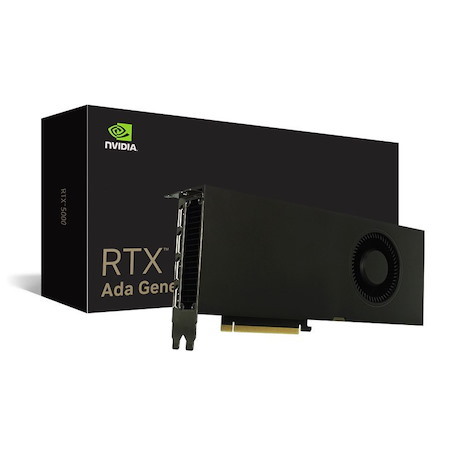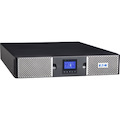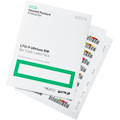GPU Memory 32GB GDDR6
Memory Interface 256 bit
Memory Bandwidth 576GB/s
Error Correcting Code (ECC) Yes
NVIDIA Ada Lovelace
Architecture-Based CUDA Cores
12,800
NVIDIA Fourth-Generation
Tensor Cores
400
NVIDIA Third-Generation RT Cores 100
Single-Precision Performance 65.3 TFLOPS³
RT Core Performance 151.0 TFLOPS³
Tensor Performance 1044.4 TFLOPS4
System Interface PCIe 4.0 x16
Power Consumption Total board power: 250W
Thermal Solution Active
Form Factor 4.4' H x 10.5' L, dual slot
Display Connectors 4x DisplayPort 1.4a5
Max Simultaneous Displays 4x 4096 x 2160 @ 120Hz
4x 5120 x 2880 @ 60Hz
2x 7680 x 4320 @ 60Hz
Encode/Decode Engines 2x encode, 2x decode (+AV1 encode
and decode)
VR Ready Yes
vGPU Software Support6 > NVIDIA vPC/vApps
> NVIDIA RTX Virtual Workstation
vGPU Profiles Supported See the Virtual GPU licensing guide.
Graphics APIs DirectX 12, Shader Model 6.7,
OpenGL 4.67, Vulkan 1.37
Compute APIs CUDA 12.2, OpenCL 3.0,
DirectCompute
NVIDIA NVLink® No
0
0.5
1.5
2.0
2.5
1.9X
Relative Performance
NVIDIA RTX 5000
Ada Generation
NVIDIA RTX
A5500
1.0
Graphics
Tests run on an Intel Core i9-12900K Processor @ 3.2GHz (5.2GHz
Turbo), 64GB RAM, Windows 11 Enterprise x64, SPECviewperf
2020, NVIDIA Driver 528.49. Relative speedup for 4K Siemens
NX composite score. Performance based on pre-released build,
subject to change.
HPC
Tests run on an Intel Core i9-12900K Processor @ 3.2GHz (5.2GHz
Turbo), 64GB RAM, Windows 11 Enterprise x64, CUDA 11.8
(cuBLAS performance), NVIDIA Driver 525.85. Relative speedup
for GFLOPS, precision = INT8, input = zero. Performance based on
pre-released build, subject to change.
0
0.5
1.5
2.0
2.5
1.5X
Relative Performance
NVIDIA RTX 5000
Ada Generation
NVIDIA RTX
A5500
1.0
Generative AI
Tests run on an Intel Core i9-12900K Processor @ 3.2GHz (5.2GHz
Turbo), 64GB RAM, Windows 11 Enterprise x64, Stable Diffusion
WebUI v1.3.1, NVIDIA Driver 536.15. Relative speedup for
512x51






